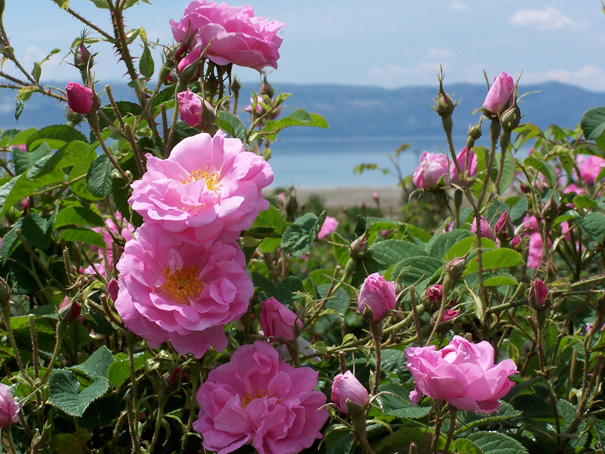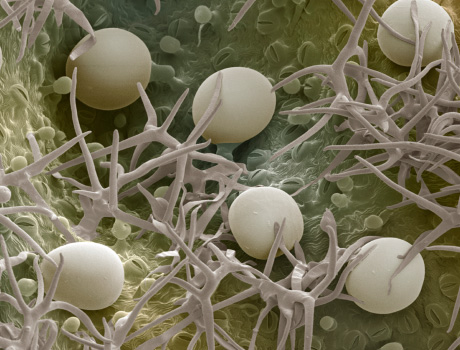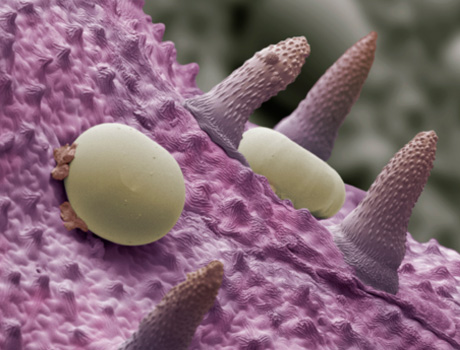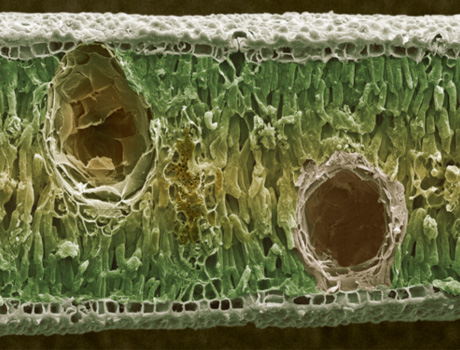Unsupported Browser
You are seeing this message because you are using the Internet Explorer web browser. Internet Explorer has not been updated with new features since the release of Windows 10 in July 2015, so it doesn't support the modern standards that our website uses. We recommend switching to Google Chrome, Mozilla Firefox, or Microsoft Edge, all of which our website is tested with.
What are Essential Oils?

The Definition of Essential Oils
Essential oils are, “highly aromatic substances made in plants by special cells but at this stage the material is not yet an essential oil, but is called an essence. It becomes an essential oil only after it has been extracted by distillation.”1
Essential oils embody the plants from which they are extracted from in a number of ways: Chemically, physically, aromatically, and spiritually. Let’s break down each of those concepts briefly:
Chemically: Essential oils are a complex make-up of volatile chemical components. These include, but are not limited to, phenols, alcohols, aldehydes, and esters. Each chemical component contributes to the overall therapeutic effect of the essential oil. An essential oil’s chemical make-up may vary from the plant from which it was extracted from due to its method of extraction; for example, distillation vs. carbon dioxide extraction vs. expression.
Physically: Factors such as environment, altitude at which the plant was grown at, geographical location, time and method of harvesting of the plant can alter the chemical components of the final essential oil.
Aromatically: The aroma of an essential oil may not resemble the aroma of the plant as closely as you think because of the influences mentioned above. However, a true essential oil should be subtle in aroma (unlike its synthetic counterpart) and remind you in some part of the plant from which it was extracted from. Descriptors for aromas of essential oils are vast but include minty, citrus, floral, balsamic, green, earthy, and woody.
Spiritually: Ancient people, and through to Medieval times, believed in the spiritual power of plants, rather than just the chemical breakdown of its healing components. Each plant had a spiritual healing element. For example, the plant rosemary (Rosmarinus officinalis) was used in Medieval times to drive out evil spirits.2 A sprig of rosemary, and other such plants, were often hung or planted near the door of the home to protect its inhabitants.
Although the Western world has for the most part now separated itself from these beliefs, aromatherapy practitioners often incorporate the spiritual aspects of the plant into their work with essential oils, depending upon which plant the essential oil was extracted from.
Essential oils are powerful tools for the aromatherapy practitioner.
The Purpose of Essential Oils and Aromas in Plants
Essential oils are not just used for healing by people. Plants use essential oils stored within themselves too! Volatile organic compounds (VOCs) are a great means of communication between plants and are used in a number of ways:
- To attract pollinators: Plants cannot move around as people do. So, they need to attract potential pollinators in order to pass on their “genes” to the next generation and ensure that the species continues. If essential oils are located in the flower or fruit of a plant, it is generally used for attraction purposes. Pollinators of plants include bees, moths, birds, beetles, and bats. Different mammal species are attracted to different aromas. Each plant species puts out varying aromas. And once a plant is pollinated, its aroma changes so that the pollinator is guided towards another plant which is in need of pollination.3
- To defend the plant against predators: Again, plants are literally rooted to the spot in which they grow so they have to come up with some form of defense against predators. Essential oils stored in the root, leaf, or bark of a plant are usually used for defense purposes by the plant. Predators hoping for a tasty meal might munch on a plant’s leaf and experience nausea or even death. Certain plants emit toxic aromas designed to defend that plant. The chemical component of terpene is often the first line of defense in these situations. In one study, it was shown that maple tree saplings released chemical compounds into the air to warn others of danger when they were exposed to maple trees damaged by herbivores.4
- To warn other plants: Plants may also have a “dispute” with their neighbors over territorial rights! Some plants emit chemical components, such as terpenes, to warn other plants that they are encroaching on another plant’s growing area. Plants are particular who they choose as neighbors in some situations! On the other hand, plants can also warn each other of impending danger. Communication methods may vary between ultrasonic sound, thread-like fungi networks, and airborne chemical compounds. Either way, plants have each other’s back through neighborhood community and scientists are only just touching the surface on what be happening in the plant world via communication methods.
- For healing: Even plants use aromatic compounds to heal themselves. Resins, such as those emitted by conifer trees, help to “heal” the tree’s wounds. Wounds include the burrowing of insects into the tree’s bark and fungal infections. Resins possess anti-fungal and antiseptic healing properties, allowing the tree to literally heal itself.5
How an Essential Oil is Stored within a Plant

You may have noticed on a warm summer’s day brushing up against a plant and smelling the aroma of it. Or you may have crushed a small leaf of an aromatic plant in the palm of your hand to release the aroma. This happens because of the essential oil stored within the plant.
External Secretory Structures

Plants store essential oils in the glands of the glandular tissue, either externally and internally. The glands contain cells that may or may not have a central cavity. This can be broken down further into plant cells, scales, and hairs located in various places in the plant. Different plant genera store essential oils in different places.6
Examples include:
- Apiaceae and Pinales: The Apiaceae plant family and the Pinales order store their essential oils in oil or resin canals. Apiaceae plant family members include fennel (Foeniculum vulgare), coriander (Coriandrum sativum), and caraway (Carum carvi). Pinales conifers include Douglas fir (Pseudotsuga menziesii).
- Lamiaceae: The aromatic Lamiaceae plant family members such as sage (Salvia officinalis), thyme (Thymus vulgaris), and rosemary (Rosmarinus officinalis) may store essential oils on the external surface of the plant’s skin (called the epidermis). Minute glandular cells and hairs contain the essential oils.
- Lauraceae: The Lauraceae plant family is made up of aromatic plants such as cinnamon (Cinnamomum zeylanicum) and bay laurel (Laurus nobilis). They store essential oils in oil cells and resin cells.
- Rutaceae: The Rutaceae plant family includes the citrus fruits such as sweet orange (Citrus sinensis), lemon (Citrus x limon), lime (Citrus aurantifolia), and bergamot (Citrus x bergamia). These particular plant species store essential oils in oil reservoirs which are found internally in the plant.

References
- 1 Davis, Patricia, 2005, Aromatherapy: An A-Z, UK: Vermilion, p. 113.
- 2 Lawless, Julia, 1995, The Illustrated Encyclopedia of Essential Oils, UK: Thorsons, p. 269.
- 3 Scientific American website, Why do flowers have scents?, Dudareva, Natalia. Accessed from: https://www.scientificamerican.com/article/why-do-flowers-have-scent/
- 4 The Scientist website, Plant Talk, Cossins, Dan, 2014. Accessed from: https://www.the-scientist.com/features/plant-talk-38209
- 5 Thought Co. website, How Resins Protect Tress and Increase Tree Value, Nix, Steve, 2018. Accessed from: https://www.thoughtco.com/what-are-tree-resins-1343409
- 6 Rose, Jeanne, 1999, 375 Essential Oils and Hydrosols, US: Frog Ltd, pp. 6 -7.
Stay Informed
Not a member yet but would like to stay up to date with NAHA? Considering joining but would like to explore the National Association for Holistic Aromatherapy more? Join our e-newsletter today and stay in touch.
Get in Touch
Our office hours are 9 am to 5 pm Mountain time, Monday - Friday.
National Association for Holistic Aromatherapy
6000 S. 5th AvePocatello, ID 83204
208-232-4911
Browse Our Content
Search the Site
Let's Get Social
Copyright © 2024 National Association for Holistic Aromatherapy. All rights reserved.
The National Association for Holistic Aromatherapy is a 501(c)3 non-profit association.
All material provided on this website is provided for informational or educational purposes only, and is not intended as a substitute for the advice provided by your healthcare professional or physician.